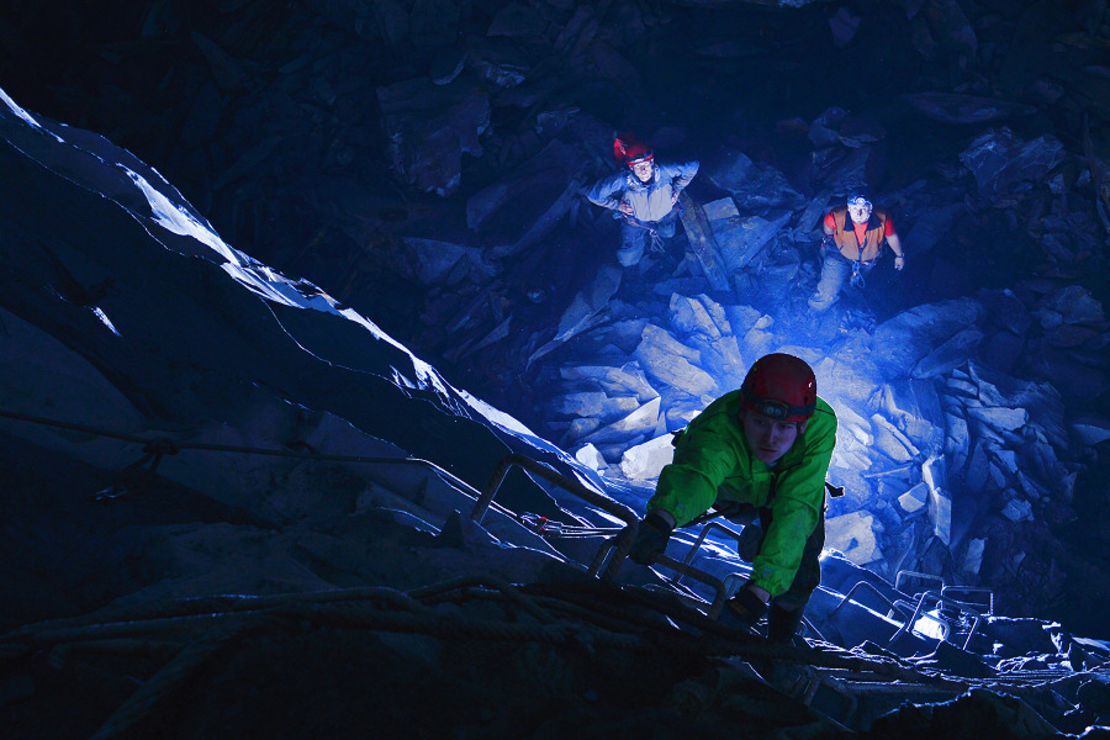What do you do with a mine after it’s fulfilled its original purpose?
An increasing number of destinations across the globe are turning sources of extraction into places of attraction.
Here’s a look at six innovative regeneration projects that are breathing new life into former industrial wastelands, including one that opened earlier this year.
Zip Below Xtreme
This new thrill ride from Go Below Underground Adventures is located in an abandoned slate mine at depths that reach 375 meters (1,230 feet) beneath the mountains of Wales’ Snowdonia National Park.
It became the deepest zip wire in the world when it opened to the public in March 2105 and also claims to be the world’s longest subterranean attraction with three miles (five kilometers) of track, including a bloodcurdling 21-meter freefall.
Zip Below Xtreme, Conwy Falls Caf, A5 (Pentrefoelas Road), Betws-y-coed, Snowdonia, Wales, UK; +44 016 9071 0108
Salina Turda
Salina Turda was the first major experiment in turning a disused mine into a non-traditional tourist attraction when it opened to the public in 1992.
Located in the heart of Transylvania, in western Romania, visitors descend 120 meters underground along the same elevator shafts that once hauled salt to the surface.
At the bottom sits an underground theme park with a grab bag of attractions like a miniature golf course, Ferris wheel, bowling alley and underground boating lake.
Salina Turda also has a spa and wellness center capitalizing on the healing properties of the cave’s naturally occurring salts and 80% humidity.
Salina Turda, Aleea Durgaului 7, Turda, Romania; +40 3642 60940
Wieliczka Salt Mine

Wieliczka Salt Mine was included alongside the Galapagos Islands and Yellowstone National Park on UNESCO’s first set of World Heritage Sites.
It remains one of Poland’s top tourist attractions to this day, drawing more than 1.2 million annual visitors.
Built in the 13th century, it was one of the world’s oldest continuously operating mines until workers ceased production in 2007.
Now, Wieliczka is perhaps better known as “Poland’s Underground Salt Cathedral,” where visitors can tour some 22 chambers, including intricate chapels, statues and chandeliers all carved out of rock salt by miners over the centuries.
A newer addition to Wieliczka is the hotel and health resort, located 125 meters underground.
It offers treatment services in chambers that offer a constant temperature and high humidity, are free of pollution and allergens and rich in micronutrients.
The disused mine is also a hub of Polish culture, hosting a regular series of concerts, art exhibitions and special events.
Wieliczka Salt Mine, ul. Danilowicza 10, 32-020 Wieliczka, Poland; +48 1227 87302
The Eden Project
One of the most celebrated landmarks in Cornwall, England lies within the open clay pit of a former kaolinite mine.
The Eden Project, as it’s known, is a series of interconnecting thermoplastic enclosures that emulate different global environments, from the 1.6-acre Mediterranean Biome to the 3.9-acre Tropical Biome – one of the world’s largest indoor rainforests.
This “pit to paradise” project first opened to the public in March 2001 and added an additional education facility, The Core, in 2005 to help communicate its central message about the interdependence of people and plants.
The former mine was seeping mineral waste as recently as October 1998, but now welcomes hundreds of thousands of visitors each year not only for the gardens, but also for art exhibitions, ice skating and a popular concert series called The Eden Sessions.
The Eden Project, Bodelva, Cornwall, UK; +44 01726 811911
Bounce Below

What do you get when you mix 930 square meters of bouncy nets, one disused cavern and the classic childhood game of Chutes and Ladders?
That, in essence, is the recipe for Bounce Below, a multi-tiered trampoline lit in Technicolor and suspended within a Victorian-era slate mine in Gwynedd, Wales.
Bounce Below opened to the public last July as “the world’s largest underground trampoline,” offering one-hour timeslots to enjoy three separate nets spread across a distance of 180 feet (55 meters) from top to bottom.
Each level is connected by a series of vertigo-inducing slides and ramps, and surrounded by walls of mesh to keep visitors from bouncing out into the abyss.
Bounce Below, Llechwedd Slate Caverns, Blaenau Ffestiniog; +44 1248 601 444
MORE: Deep thrills: The crazy cave trampolines of Wales
Mega Cavern
Over the past few months, mountain bike pros have flocked to the most unlikely of locations to perfect their skills: an abandoned limestone quarry and former Cold War fallout shelter hidden within the bowels of Louisville, Kentucky.
The latest attraction at the Louisville Mega Cavern easily snagged the title of world’s largest indoor bike park when it opened to the public this February, 30 meters below the Louisville Zoo.
The 33,000 square meter playground has 45 trails covering more than 19 kilometers of track, including a mix of BMX-style jump courses and beginner-level alternatives.
One of the best features of the manmade cavern – which also includes zip lines, aerial ropes courses and tram rides – may be its four-season appeal.
At a constant 10 degrees Celsius (50 F), Mega Cavern maintains the same temperature in the dead of winter as it does in the dog days of summer.
Mega Cavern, 1841 Taylor Ave., Louisville, Kentucky; +1 877 614 6342
Mark Johanson is a freelance travel and culture writer based in Santiago, Chile.





